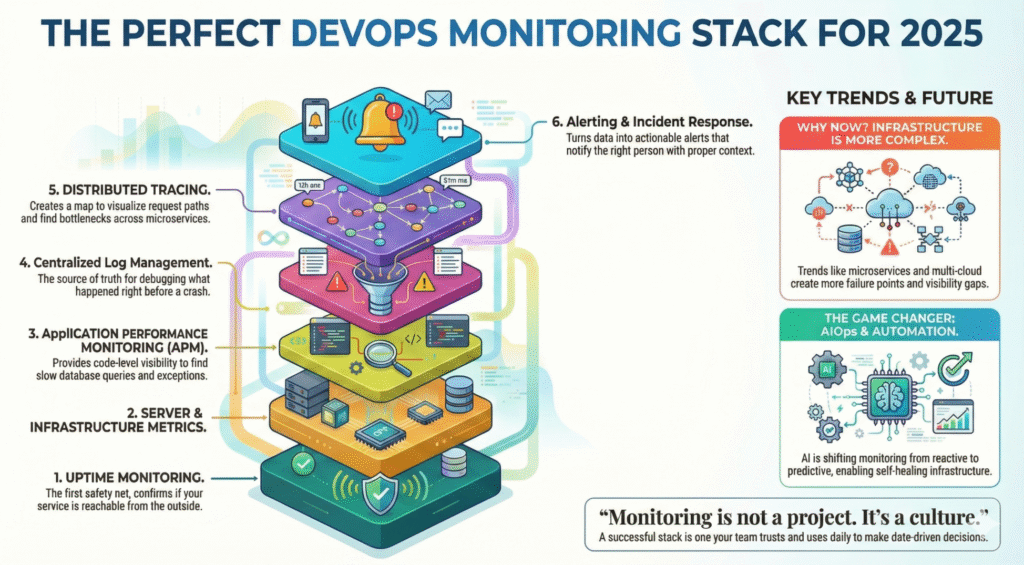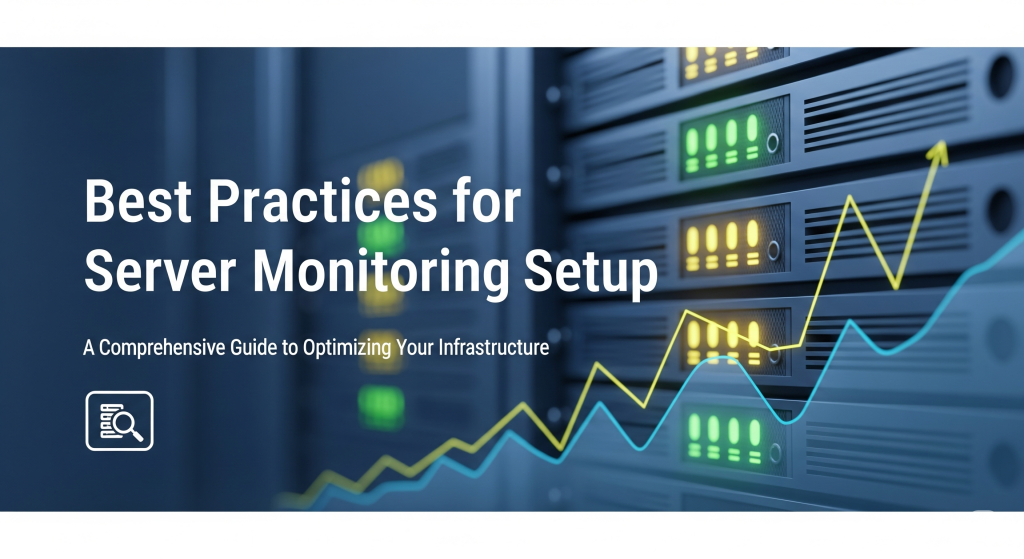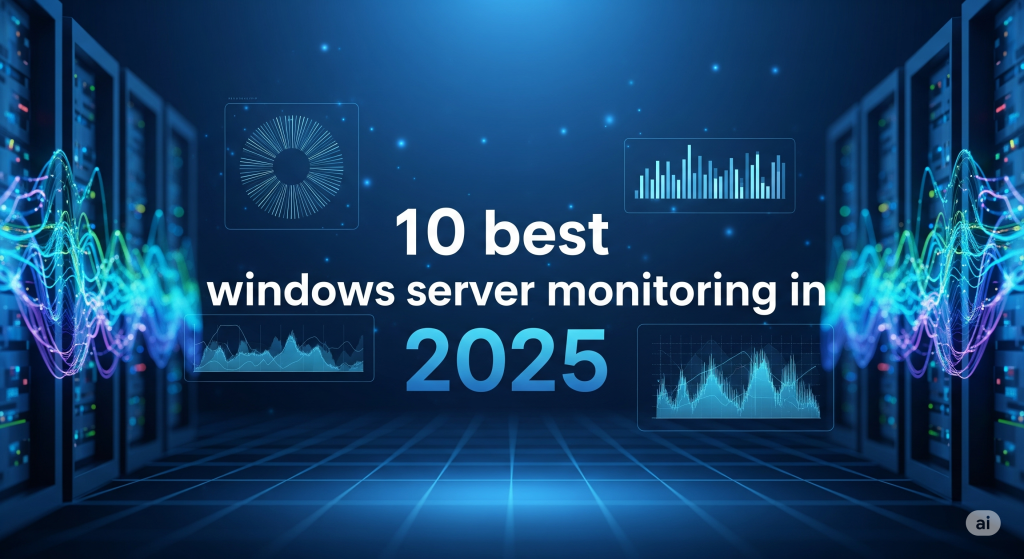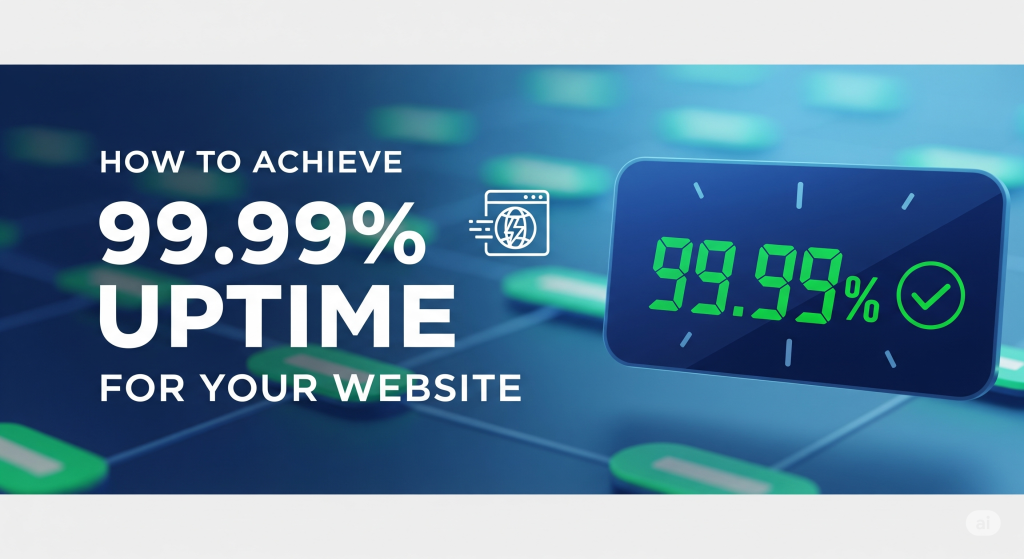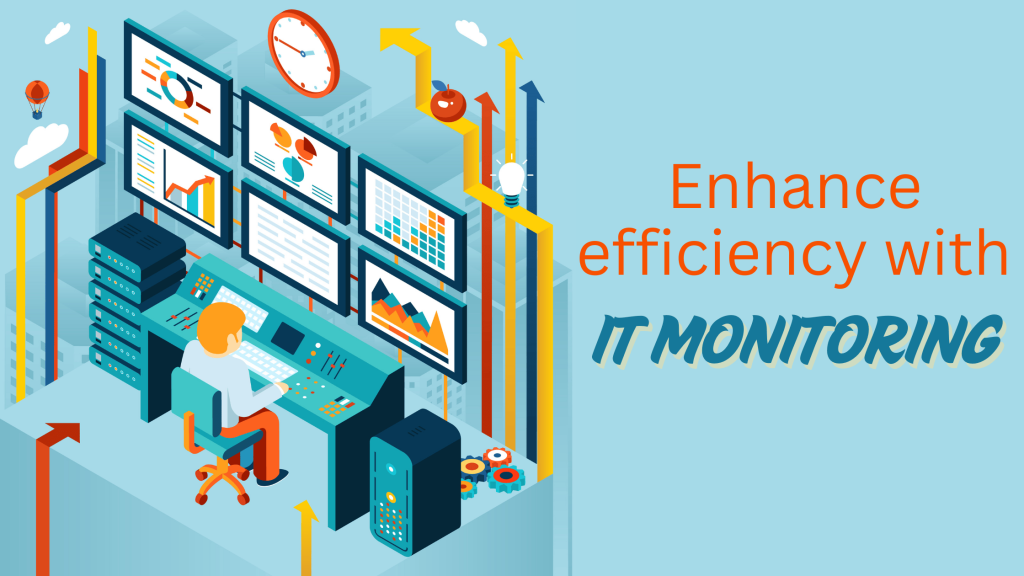WireGuard has quickly become one of the most popular VPN technologies for teams that want a secure, fast, and relatively simple way to connect remote users, offices, cloud networks, and production systems. But there’s a catch: VPN reliability is invisible until it breaks.
If your WireGuard tunnel drops, handshakes stop renewing, peers silently lose connectivity, or routing changes accidentally cut off traffic, you often won’t notice until someone says “I can’t reach the server.” That’s too late—especially when the VPN is part of your production access path, site-to-site connectivity, or internal service mesh.
That’s where WireGuard monitoring comes in.
In this guide, you’ll learn:
-
What WireGuard is (and how it works at a practical level)
-
What “WireGuard monitoring” actually means
-
Why you need to monitor WireGuard services (beyond “is the port open?”)
-
The most important WireGuard metrics and signals to track
-
Several proven methods for monitoring WireGuard servers and peers
-
How to build a complete monitoring setup with uptime checks + performance metrics + alerting
-
How Xitoring (Xitoring.com) can monitor WireGuard reliably with minimal effort
If you run WireGuard on Linux, cloud VPS, Kubernetes nodes, firewalls, or edge devices—this is the blueprint.
WireGuard Monitoring: What It Is, Why It Matters, and How to Monitor WireGuard VPN Services (The Right Way)
What Is WireGuard?
WireGuard is a modern VPN protocol designed to be fast, secure, and simple. Unlike older VPN stacks that can become complex and heavy (with large codebases and multiple negotiation modes), WireGuard focuses on:
-
A small and auditable codebase
-
Strong cryptography by default
-
Minimal configuration complexity
-
High performance with low overhead
How WireGuard Works (In Practical Terms)
WireGuard creates a virtual network interface (commonly wg0) on a machine. You configure peers using public keys and allowed IP ranges. Once running, the interface routes traffic into an encrypted tunnel.
WireGuard is often described as “stateless” compared to classic VPNs. More accurately:
-
It uses UDP and maintains tunnel state primarily through short-lived handshakes.
-
It doesn’t require constant control-channel chatter.
-
Peers are identified by public keys, not usernames/passwords.
-
Routing is driven by AllowedIPs—a powerful concept, but also a common source of outages.
Common WireGuard Use Cases
WireGuard is used for:
-
Remote employee access to private infrastructure
-
Site-to-site connectivity between offices and cloud networks
-
Secure admin access to servers without exposing SSH publicly
-
Overlay networks across multiple cloud providers
-
Secure connectivity for IoT and edge devices
-
Private access to internal APIs and databases
It’s fast and elegant—but it can still fail in ways that are hard to detect without monitoring.
What Is WireGuard Monitoring?
WireGuard monitoring is the practice of continuously checking the health, availability, and performance of your WireGuard VPN service and its peers—so you can detect issues before users do.
It is not only “is the UDP port open?”
A complete WireGuard monitoring approach usually includes:
-
Service Availability Monitoring
-
Is the WireGuard endpoint reachable?
-
Is the UDP port responding (or at least reachable through the network)?
-
Is the host up?
-
-
Tunnel & Peer Health Monitoring
-
Are peers successfully handshaking?
-
Are handshakes recent?
-
Are bytes being transferred in both directions?
-
Are expected peers connected?
-
-
Network & Routing Validation
-
Can you reach private services through the tunnel?
-
Are routes/AllowedIPs correct?
-
Is DNS resolution working over the VPN?
-
-
Performance Monitoring
-
Latency, jitter, packet loss (especially for site-to-site or VoIP use cases)
-
Throughput and bandwidth usage
-
CPU load (encryption overhead)
-
Memory and network saturation
-
-
Operational Monitoring
-
Configuration changes
-
Service restarts
-
Log errors and unusual events
-
Interface flaps
-
Monitoring is how you turn a VPN from “it usually works” into “it’s reliable.”
Why You Need to Monitor WireGuard Services
Even though WireGuard is stable and efficient, it still sits at the intersection of networking, firewalling, routing, DNS, and operating system behavior. That’s a lot of moving parts.
Here are the business and technical reasons to monitor WireGuard:
1) WireGuard Failures Can Be Silent
A tunnel can appear “up” (interface exists) while peers are unable to communicate due to:
-
Broken routing (AllowedIPs mistakes)
-
Firewall rule changes
-
NAT mapping issues
-
MTU fragmentation problems
-
Cloud security group changes
-
Upstream ISP routing changes
Without monitoring peer handshakes and traffic, you may think everything is fine—until it isn’t.
2) VPN Is Often a Critical Dependency
If your WireGuard VPN connects:
-
offices to your cloud
-
admins to production
-
services across private subnets
then a VPN outage is effectively a production outage.
3) You Need Proof and Visibility
When someone reports “VPN is slow” or “I can’t connect,” monitoring provides:
-
a timeline of the incident
-
exact peer impact
-
correlated resource and network stats
-
evidence for debugging (and for postmortems)
4) Security and Abuse Detection
Monitoring can help detect:
-
unexpected peers connecting
-
unusual traffic spikes
-
handshake anomalies
-
brute-force attempts at the endpoint (even if WireGuard is robust, your host might not be)
-
suspicious bandwidth patterns
5) Alerting Saves You Time
Instead of reactive troubleshooting, you get proactive alerts:
-
“Peer X hasn’t handshaked in 10 minutes”
-
“WireGuard endpoint unreachable from region Y”
-
“Traffic dropped to near zero on a tunnel that should be active”
-
“CPU spiked during peak VPN usage”
That’s the difference between guessing and knowing.
What Can Go Wrong with WireGuard (Real-World Failure Modes)
To monitor WireGuard effectively, you need to know what failure looks like.
Endpoint Reachability Problems
-
Host is down
-
Network interface down
-
UDP port blocked by firewall / security group
-
DDoS mitigation or rate limiting affecting UDP
-
ISP blocks or changes
Handshake Issues
-
Peer’s public key mismatch (config drift)
-
Clock skew (rare but can affect some setups)
-
NAT mapping expiring (common for mobile clients)
-
Peers behind restrictive NATs (need keepalive)
Routing / AllowedIPs Misconfiguration
This is one of the most common WireGuard “it broke” issues:
-
AllowedIPs too broad → traffic hijacked or blackholed
-
AllowedIPs too narrow → no route to internal resources
-
Overlapping subnets across sites → conflicts
-
Missing IP forwarding / NAT rules on server
MTU and Fragmentation Issues
VPN overhead can push packets over the path MTU:
-
Works for small requests
-
Fails for large downloads or certain protocols
-
Appears as “random” slowness/timeouts
DNS Problems Over VPN
-
Clients connect, but can’t resolve internal services
-
Split DNS misconfigured
-
DNS server unreachable through tunnel
Performance Bottlenecks
-
CPU saturated encrypting traffic
-
NIC saturated
-
Packet loss on upstream provider
-
Underpowered VM instance
-
Congestion at peak times
WireGuard is solid—but the environment around it isn’t always.
Key WireGuard Monitoring Metrics and Signals
Below are the most valuable signals to track. If you only monitor one or two things, you’ll miss the real issues.
1) Peer Handshake Time (Freshness)
WireGuard peers periodically handshake. If a peer hasn’t handshaked in a long time, it might be:
-
disconnected
-
blocked by NAT/firewall
-
misconfigured
-
experiencing routing issues
Metric idea: “Seconds since last handshake” per peer.
2) Bytes Transferred (Rx/Tx)
WireGuard exposes per-peer:
-
bytes received
-
bytes sent
This tells you whether the tunnel is actually carrying traffic.
Metric idea: traffic rate (bytes/sec) and total bytes.
3) Peer Count / Expected Peers
If you expect 10 site peers and only 7 show handshakes recently, that’s an incident—even if the endpoint is still reachable.
4) Interface State and Service Health
-
Is
wg0up? -
Is the WireGuard service running?
-
Is the process stable or restarting?
-
Is the interface flapping?
5) UDP Port Reachability (External Check)
Monitoring from outside your network helps detect:
-
cloud firewall changes
-
routing issues
-
ISP problems
-
regional connectivity issues
Even though UDP doesn’t behave like TCP, “can we reach the host and port path” checks still matter.
6) End-to-End Private Service Checks (Most Important)
The strongest validation is:
Can a monitor reach an internal resource through the WireGuard tunnel?
Examples:
-
Ping a private IP
-
HTTP check to an internal dashboard
-
TCP check to a private database port (if safe)
-
DNS lookup via internal resolver
This catches routing and firewall issues that port checks can’t.
7) System Resource Metrics (Host-Level)
VPN encryption and routing cost resources:
-
CPU usage
-
memory usage
-
load average
-
network throughput
-
dropped packets
-
disk space (logs)
8) Logs and Security Signals
Useful for diagnosing:
-
service start/stop events
-
configuration reload errors
-
firewall blocks
-
kernel messages (interface events)
How to Monitor WireGuard: Practical Monitoring Approaches
WireGuard monitoring is best when you combine multiple layers. Here are the main approaches:
Approach A: Basic Uptime Monitoring (Host + Port)
What it detects: server down, network path broken, firewall blocks
What it misses: handshake problems, routing issues, tunnel is “up” but unusable
This is a baseline, not a complete solution.
Approach B: Peer/Tunnel Monitoring via wg show
WireGuard provides useful runtime information via:
This includes:
-
peer public keys
-
endpoint addresses
-
latest handshake time
-
transfer stats
You can script this and export metrics to your monitoring system.
Approach C: End-to-End Synthetic Checks Through the Tunnel
You run checks from a monitoring node that routes through WireGuard to validate:
-
internal reachability
-
service response times
-
DNS resolution
This is the closest to what users experience.
Approach D: Full Stack Monitoring (Recommended)
Combine:
-
external uptime checks
-
host metrics
-
WireGuard peer stats
-
synthetic checks
-
alerting + escalation
This is where an all-in-one platform makes your life easier.
WireGuard Monitoring with Xitoring (Recommended)
If you want WireGuard monitoring that’s simple to set up, reliable, and designed to catch real tunnel problems—not just “server is up”—Xitoring is one of the best options.
Xitoring (Xitoring.com) is an all-in-one server and uptime monitoring solution that helps you monitor infrastructure and services with a focus on actionable alerts and visibility. For WireGuard specifically, you can use Xitoring to implement a layered monitoring strategy:
-
Monitor server uptime and service availability
-
Track tunnel/peer signals via integrations
-
Add end-to-end checks that confirm internal connectivity
-
Receive alerts when peers stop handshaking or traffic drops unexpectedly
To get started with the dedicated integration details, use this page: WireGuard Monitoring integration on Xitoring: https://xitoring.com/integrations/wireguard-monitoring/
Why Xitoring Works Well for WireGuard Monitoring
WireGuard monitoring needs to be:
-
low maintenance (VPN configs change, teams grow)
-
alert-focused (handshake freshness is more useful than raw logs)
-
end-to-end (detect routing issues, not just port status)
Xitoring fits this because it’s designed to bring uptime checks and server monitoring together—so you don’t end up juggling 4 tools, 3 exporters, and a collection of fragile scripts.
If you’ve ever had a WireGuard outage caused by a “small” firewall change or routing update, you already know why this matters.
Conclusion
WireGuard is one of the best VPN technologies available today—fast, modern, and secure. But like any networking layer, it can fail in subtle ways that aren’t obvious from a simple “server is up” check.
The most reliable WireGuard monitoring strategy includes:
-
uptime and reachability monitoring
-
per-peer handshake and traffic monitoring
-
end-to-end checks through the tunnel
-
host performance monitoring
-
smart alerting that avoids noise
If you want an easier path to production-grade WireGuard monitoring—without stitching together multiple tools—Xitoring is an excellent choice to bring uptime monitoring, server visibility, and WireGuard-specific monitoring into a single workflow.
You can start here: https://xitoring.com/integrations/wireguard-monitoring/





